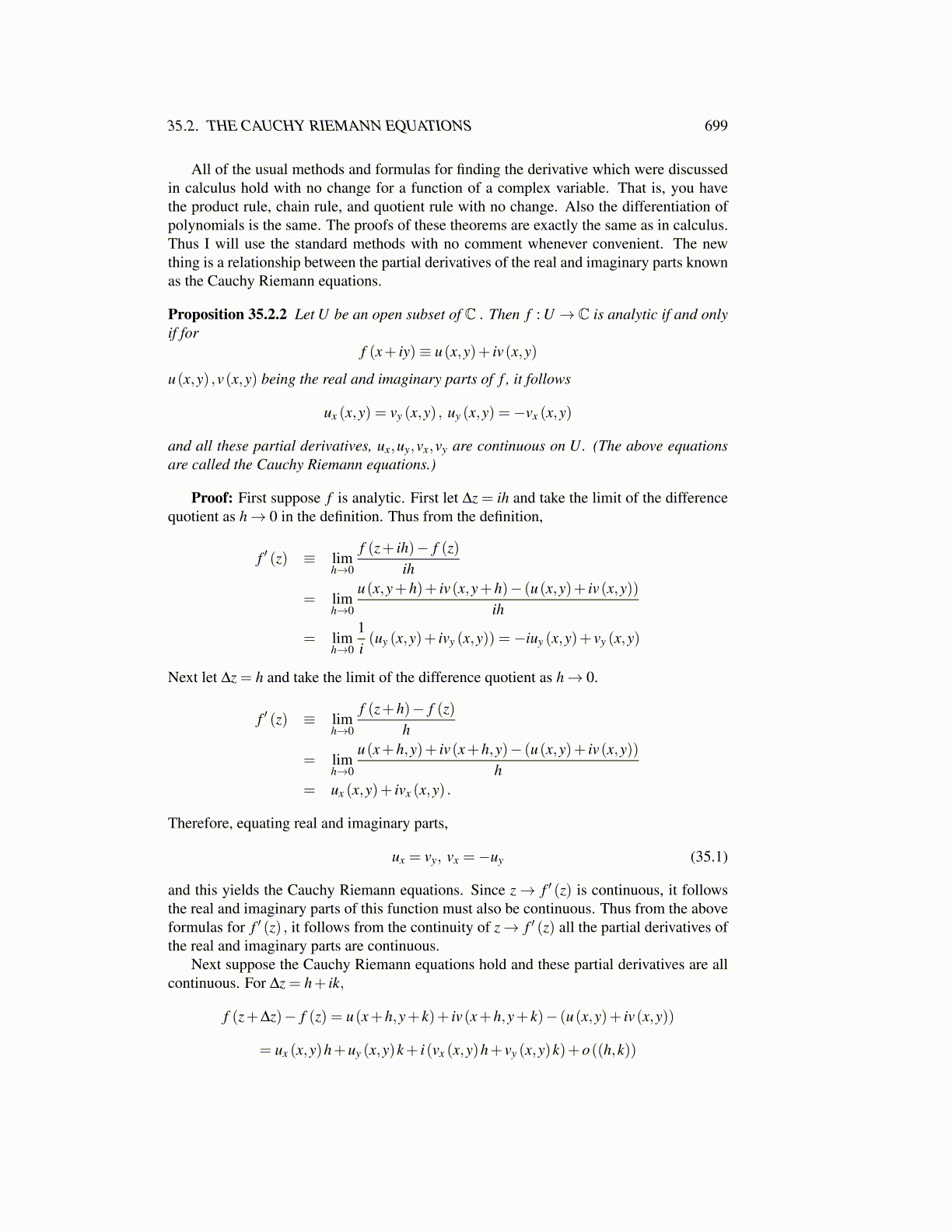
35.2. THE CAUCHY RIEMANN EQUATIONS 699
All of the usual methods and formulas for finding the derivative which were discussedin calculus hold with no change for a function of a complex variable. That is, you havethe product rule, chain rule, and quotient rule with no change. Also the differentiation ofpolynomials is the same. The proofs of these theorems are exactly the same as in calculus.Thus I will use the standard methods with no comment whenever convenient. The newthing is a relationship between the partial derivatives of the real and imaginary parts knownas the Cauchy Riemann equations.
Proposition 35.2.2 Let U be an open subset of C . Then f : U → C is analytic if and onlyif for
f (x+ iy)≡ u(x,y)+ iv(x,y)
u(x,y) ,v(x,y) being the real and imaginary parts of f , it follows
ux (x,y) = vy (x,y) , uy (x,y) =−vx (x,y)
and all these partial derivatives, ux,uy,vx,vy are continuous on U. (The above equationsare called the Cauchy Riemann equations.)
Proof: First suppose f is analytic. First let ∆z = ih and take the limit of the differencequotient as h→ 0 in the definition. Thus from the definition,
f ′ (z) ≡ limh→0
f (z+ ih)− f (z)ih
= limh→0
u(x,y+h)+ iv(x,y+h)− (u(x,y)+ iv(x,y))ih
= limh→0
1i(uy (x,y)+ ivy (x,y)) =−iuy (x,y)+ vy (x,y)
Next let ∆z = h and take the limit of the difference quotient as h→ 0.
f ′ (z) ≡ limh→0
f (z+h)− f (z)h
= limh→0
u(x+h,y)+ iv(x+h,y)− (u(x,y)+ iv(x,y))h
= ux (x,y)+ ivx (x,y) .
Therefore, equating real and imaginary parts,
ux = vy, vx =−uy (35.1)
and this yields the Cauchy Riemann equations. Since z→ f ′ (z) is continuous, it followsthe real and imaginary parts of this function must also be continuous. Thus from the aboveformulas for f ′ (z) , it follows from the continuity of z→ f ′ (z) all the partial derivatives ofthe real and imaginary parts are continuous.
Next suppose the Cauchy Riemann equations hold and these partial derivatives are allcontinuous. For ∆z = h+ ik,
f (z+∆z)− f (z) = u(x+h,y+ k)+ iv(x+h,y+ k)− (u(x,y)+ iv(x,y))
= ux (x,y)h+uy (x,y)k+ i(vx (x,y)h+ vy (x,y)k)+o((h,k))